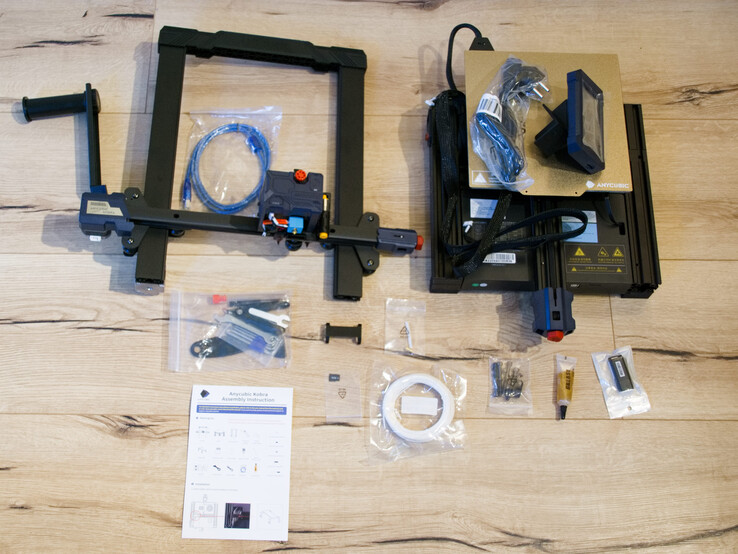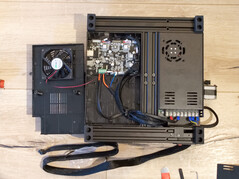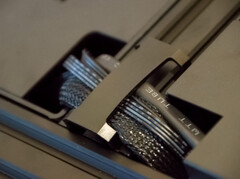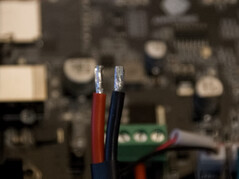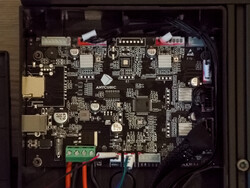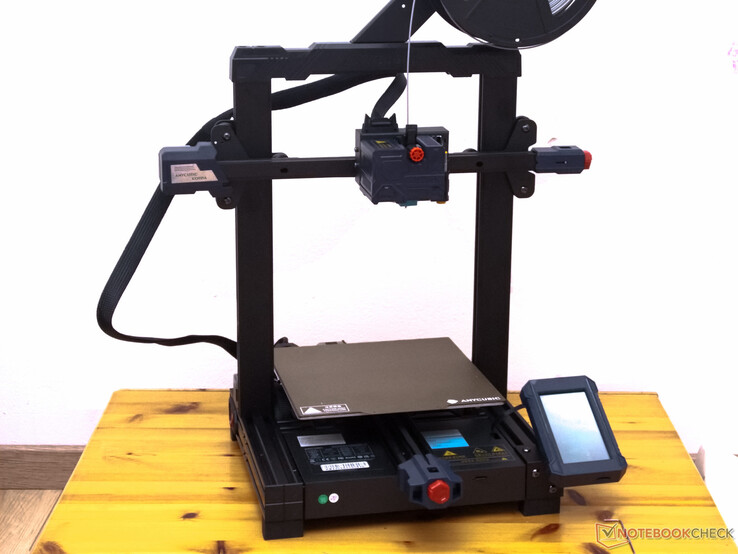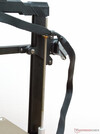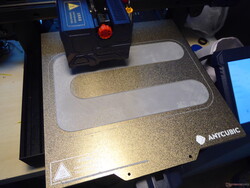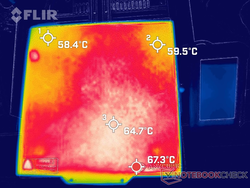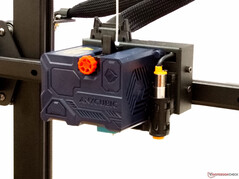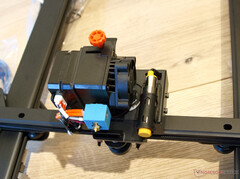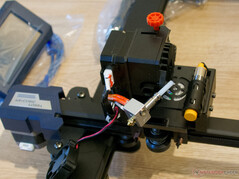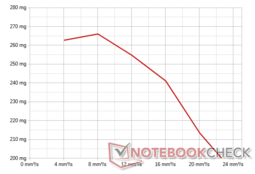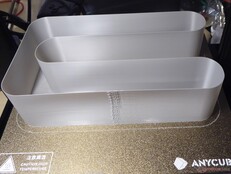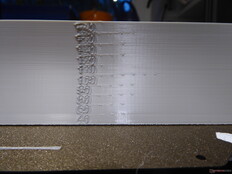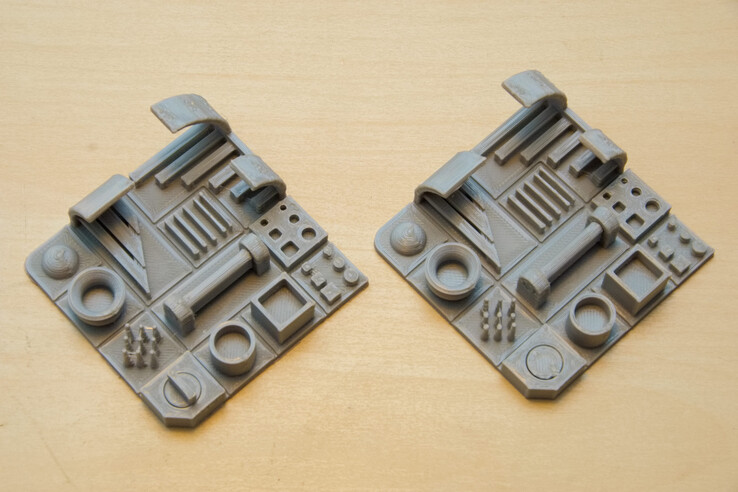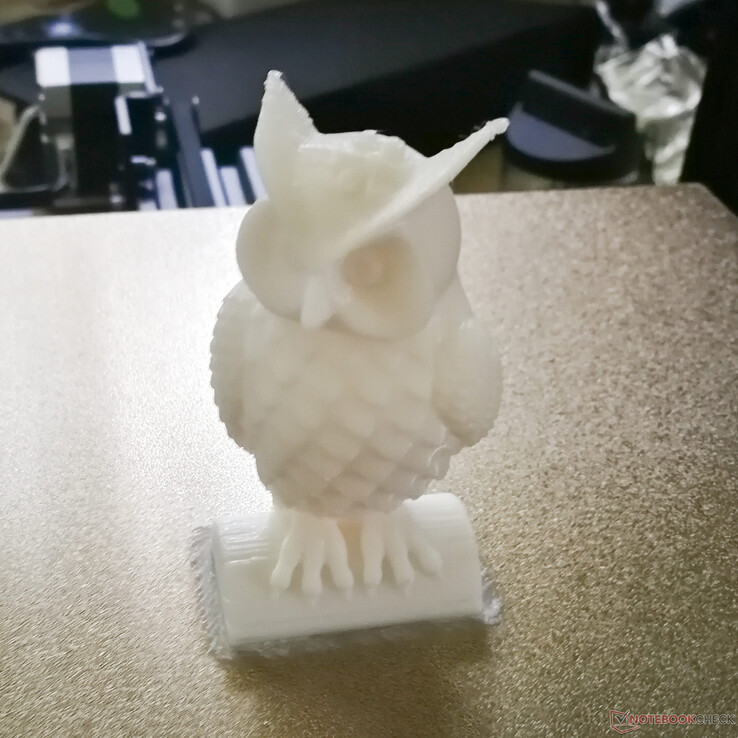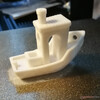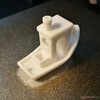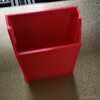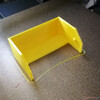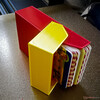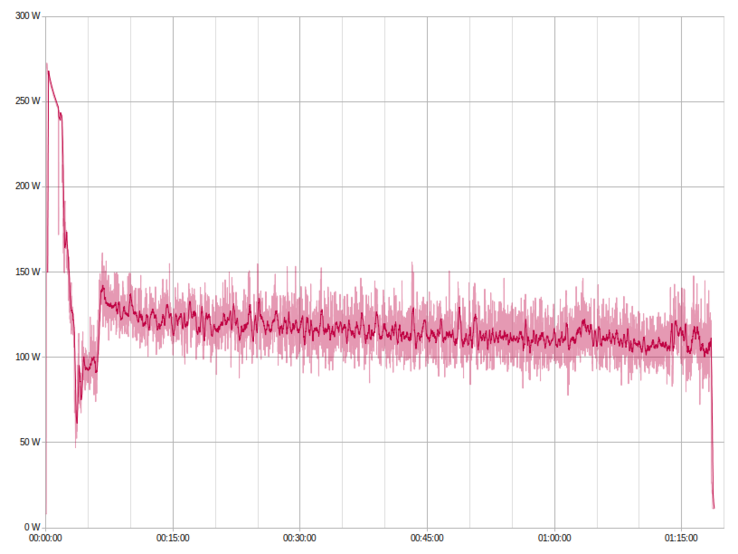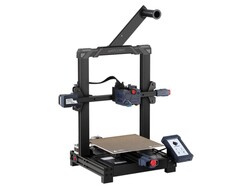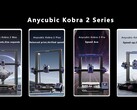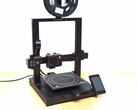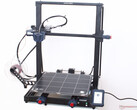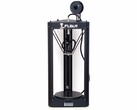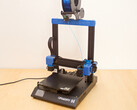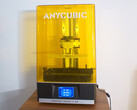Anycubic Kobra 3D-printer review: fast printing at 180 mm/s

The Anycubic Kobra is one of the five new 3D printers that Anycubic introduced at the end of March 2022. The new FDM printer ships with a long list of interesting features. Starting with automatic mesh bed leveling, the magnetic print bed, and the direct-drive extruder, the Kobra comes on strong.
At first glance, the workmanship of the individual elements appears first-class. Unfortunately, a closer look revealed that some parts of the 3D printer could be improved a bit here and there. However, these problems do not affect the function of the Anycubic Kobra.
Specifications
As the successor to the Anycubic Viper, the Kobra offers a slightly different design, but almost the same range of functions. Instead of mesh bed leveling via load cell, which is also installed in the Kobra Max, an inductive sensor is used here. The extruder is also directly positioned above the hotend in the Anycubic Kobra.
| Anycubic Kobra | |
|---|---|
| Underlying Technology | FDM, FFF |
| 3D print size limit | 220 × 220 × 250 mm (~8.7 x 8.7 x 9.8 in) |
| Dimensions excl. power lead | 48,6 × 43 × 50 cm (~19.1 x 16.9 x 19.7 in) |
| Kinematics | Prusa/Mendel XYZ-kinematics |
| Extruder | Direct-Drive-Extruder Titan-Style; V6-Hotend |
| Print platform | Magnetic PEI-coated spring steel sheet heated 24 V power supply |
| Board Microcontroller |
Trigorilla Pro A V1.0.4 Board HDSC hc32f460 |
| Firmware on test unit | Anycubic Kobra Firmware (Marlin Derivate) GCode-compatible |
| Stepper Motor Driver | 1/256 step interpolation stepper driver (soldered) |
| Ports | MicroSD, USB Type B |
| Control options | Touchscreen, serial Interface via USB |
| Power supply | Internal 110 V—240 V to 24 V power supply unit |
| Manufacturer’s website | Anycubic |
Structure and setup - The Anycubic Kobra is up and running in no time
The Anycubic Kobra is quickly assembled. For this, the archway is screwed onto the base, and then the screen and filament roll holder can be mounted. After establishing a few cable connections, this 3D printer is ready for use.
All tools for the assembly are included in the package. Additionally, some handy items like a scraper, spare nozzle and other tools for maintenance are included.
The included microSD card contains test files as well as some profiles for Cura, which are quickly integrated and allow for first attempts. During the review process we noticed that some settings still have to be adapted to this 3D printer.
Cable management
At first glance, the cables look tidy underneath the base unit's covers. The control board is housed in a plastic casing. Almost all cables are combined into a thick cable loom. A cable clip is included for protecting this cable harness, which is plugged onto the V-slot aluminum extrusions. This is where we encounter the first problem.
The cable clip is hard to attach and squeezes the cables. A look at the cables attached to the screw terminals also shows something that we don't like to see. Instead of electric wire ferrule, tinned strands are installed in the screw terminals here. In the long run, the soft solder can start to flow, which means that there is no longer a good electrical connection. Therefore, the connections of the screw terminals must be inspected at regular intervals.
Control Board
The Anycubic Kobra uses the same board as the Kobra Max. The Trigorilla Pro A V1.0.4 board is a development of Anycubic and unfortunately offers few upgrade options due to many proprietary connectors.
An HDSC hc32f460 is used on the board as a microcontroller. The 32-bit chip with Cortex-M4 core operates at 200 MHz. Thus, the Anycubic Kobra has enough computing power at its disposal.
Frame
The frame of the Anycubic Kobra is made of V-slot aluminum extrusions. Here, the construction of the 3D printer is rather basic. One can note that the print bed was installed without an adjustment option and that the upper crossbar is made of plastic.
The Z-axis is driven on one side. However, the drag design is stable. There are hardly any disadvantages. Some plastic parts protect parts like pulleys or motors.
User interface
The Anycubic Kobra can be controlled via touchscreen or USB interface. The touchscreen is the same model as that of the Kobra Max. Thus, only the basic control functions are available here as well. Besides the standards for bed leveling, preheating and filament change, the neat menu doesn't offer many control options. During printing, only print speed, temperatures, and fan speed can be controlled.
Performance - Impressive speed of 180 mm/s
The Anycubic Kobra offers a solid performance, but cannot satisfy in all aspects. However, many of the issues with the print quality can be attributed to the somewhat poor Cura profile that Anycubic provides. Still, for a 3D printer in Prusa/Mendel design, Anycubic's device is comparatively fast.
Print bed
The magnetically attached print base consists of a PEI-coated spring steel sheet. PEI is a polymer to which other plastics adhere very well when warm. As soon as the print object and the print plate cooled down, the object no longer sticks to the plate. The print bed of the Anycubic Kobra is rigidly mounted on the carriage. Manual adjustment of the print bed is therefore not possible. Instead, the 3D printer exclusively uses mesh bed leveling via an inductive sensor. This has the benefit, especially for inexperienced users, that everything is set in just a few steps.
After a good two-minute heat-up period, the print bed is quite evenly warm. At the set 60 °C (140 °F), the maximum temperature on the surface is 67 °C (~153 °F), the minimum 58.4 °C (~137 °F). However, there are no large areas below the target temperature.
Once printing is complete, the manufactured objects can be easily removed from the spring steel printing plate. A small bend in the spring steel sheet normally releases the printed object.
Hotend and Extruder
The hotend and extruder are a direct-drive combination in the Titan style. The contact pressure of the filament to the transport wheel can be adjusted via the eye-catching red dial. Underneath is a fairly standard hotend. This has a PTFE inliner all the way into the heating zone, and is therefore not suitable for higher temperatures above 250 °C (482 °F). At about this temperature, the PTFE, also known as Teflon, begins to emit toxic vapors. For object cooling, a small radial fan is installed at the rear, which blows air from the back towards the print object via a nozzle. There is also an inductive proximity sensor on the print head. This determines the distance to the print bed. It functions sufficiently well for automatic bed leveling.
The maximum flow rate of the hotend is relatively low in accordance with the hardware used, but sufficient for the specified printing speeds. Due to the PTFE inliner and the short heating block, the melt zone is quite small. From the required 12 mm³ per second, the flow rate decreases, above 16 mm³/s the filament flow collapses. At a flow rate of 16 mm³/s, the possible printing speed (with a layer height of 0.2 mm and an extrusion width of 0.44 mm) is 182 mm/s. Accordingly, Anycubic has correctly stated the maximum print speed as 180 mm/s. The 3D printer can be trusted with this printing speed. In our practical test of up to 150 mm/s, there were only minor glitches. Dropouts cannot be detected here.
Print quality
The Anycubic Kobra delivers a good print quality. However, the included Cura profile for the 3D printer could be improved in some places. For example, the retraction settings seem to be in need of improvement. Heavy stringing, blobs and stuck print-in-place parts are the result. Neither gate nor knob can be moved. Overhangs are generated well up to 50°. Above that, the 3D printer's object cooling is unable to cool the extruded plastic in time.
The dimensional accuracy of the Kobra is quite good. Deviations of more than 0.4 mm cannot be detected. It is particularly positive that the extrusion accuracy of the 3D printer is quite high. The surface layers do not show any gaps, thin walls are created without tolerance.
In practice, there were no failures in any of the test prints. The Anycubic Kobra reproduces organic structures very well. Artifacts caused by vibrations are only faintly visible, if at all. However, the wave patterns caused by the direct-drive extruder are somewhat more visible. While the influences of the teeth of the drive wheel and gear in Bowden extruders are damped by the flexible PTFE tube, they are clearly apparent here. This results in a quite distinct pattern on long straight lines.
Security - Thermal Runaway Protection works
The temperature protection shutdowns of the Anycubic Kobra work without fail. Both the hotend and the heated print bed switch off if the temperatures develop differently than they should. This allows the 3D printer to detect both shorted and broken sensor cables, as well as incorrectly mounted sensors or heating elements. We tested this by manipulating the temperatures of the print bed and filament nozzle using hot air or a cold cloth, as well as short-circuiting the thermistors of the hot end and heating bed or disconnecting them from the mainboard.
The protective earth, on the other hand, is unfortunately not traceable on all components of the Anycubic Kobra. Neither the x-axis nor the hotend have a corresponding connection to earth. However, the risk of mains voltages being present on these two components is relatively low.
Emissions - The Anycubic 3D-printer can be quiet
The Anycubic Kobra 3D printer can work quietly. When printing speeds are set below 60 mm/s, the various fans drown out the motor noise. Then, the printer's volume is around 40 dB(A). At higher printing speeds, we measured up to 50 dB(A) with the Voltcraft SL-10 sound level meter from one meter (~3.3 feet) away.
Corresponding to the open construction, the smells of the melted plastic spread around the room. Initially, we noticed that the magnetic foil on the print bed also had a strong scent as soon as it was heated up. However, the bad odor disappeared after a while.
Energy consumption - plenty of power ensures a short heat-up phase
We measure the energy consumption during printing of a 3DBenchy with a Voltcraft SEM6000. During only two minutes of heating up the print bed, the 3D printer requires 272 watts at peak. As the temperature rises, so does the electrical resistance of the heating plate, which means it can convert less power. During printing, the Anycubic Kobra needs an average of 118 watts. The energy consumption is therefore significantly higher than the results achieved by the Artillery Genius and the Wizmaker P1 printers of about the same size.
The energy consumption curve here shows the clear effects of increasing object height and cooling fan speed on the energy demand. As soon as the fan in the print head is running after the first layer, some of the heat is blown away from the print bed, which has to reheat more. Better insulation of the print bed could be helpful here to reduce the energy requirements of the 3D printer. Among other things, self-adhesive insulation mats can be used for this.
Verdict - A good 3D printer even though it has a few flaws
Considering the print quality, the fairly affordable Anycubic Kobra is compelling. The existing Cura profiles offer an easy start, but still need some improvement. Only the slight artifacts caused by the direct drive could be annoying.
The real points of criticism for the 3D printer relate to the tinned strands in the screw terminals and the many plastic parts around the printer. Even though there is no noticeable disadvantage in terms of stability and stiffness due to the plastic upper crossbar, there is still the question of the durability of the plastic parts. However, the same question arises even more with the cables with tinned strands. Due to the cold flow of solder, the contact resistance at the press fit connections may increase over time. This may result in damage to the device. The 3D printer should therefore be serviced at regular intervals. All screw terminals should be tightened and the cables should also be checked for damage.
The performance of the Anycubic Kobra is in line with the price. A high potential printing speed makes the printer interesting for professionals as well.
What we especially like here is that the Anycubic Kobra is quick to set up. The print bed is automatically calibrated, and there is little need to adjust the provided Cura profiles apart from the retractions. The 3D printer works after a short setup and also offers beginners a quick entry into 3D printing.
Prices & Availability
Anycubic offers the Anycubic Kobra in its store starting at 279 EUR (281 USD) with shipping from a European or US warehouse. If you subscribe to Anycubic's email newsletter, you can save another 20 EUR (20 USD) with the code POP20.


 Deutsch
Deutsch English
English Español
Español Français
Français Italiano
Italiano Nederlands
Nederlands Polski
Polski Português
Português Русский
Русский Türkçe
Türkçe Svenska
Svenska Chinese
Chinese Magyar
Magyar